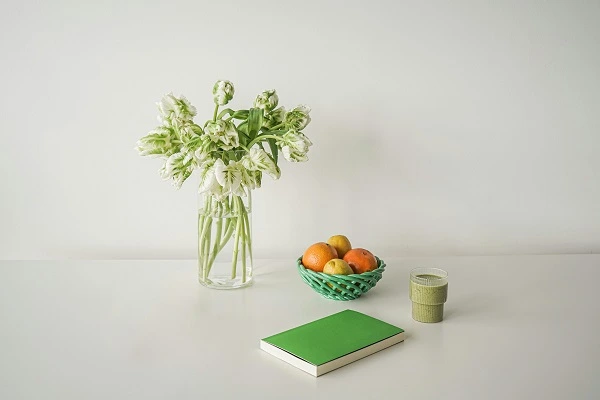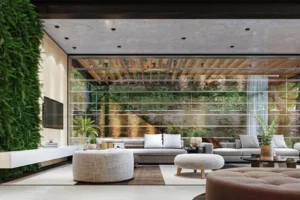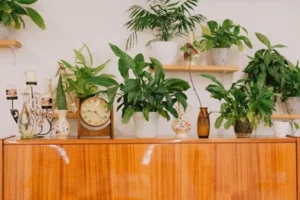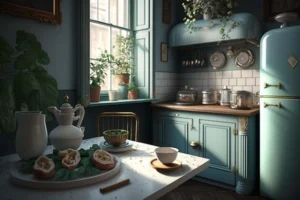Minimalism isn’t just an aesthetic anymore—it’s a lifestyle. For millennials, especially those living in tight urban apartments, every square inch counts. That’s where smart, stylish systems like minimalist plant rigs come in.
Urban gardening used to mean crowding windowsills or cluttering balconies with pots. But today, it’s about intentional design. Millennials are blending sustainability, self-sufficiency, and modern design in ways previous generations didn’t prioritize.
They don’t just want to grow lettuce. They want to do it in a way that looks clean, functions effortlessly, and matches the rest of their curated space. Think hydroponic systems that double as art pieces.
This article explores a new wave of vertical plant rigs that tick all those boxes—made for apartments, built for beauty, and tailored for millennial lifestyles.
What Are Minimalist Plant Rigs? (And Why They’re Not Just Aesthetic)
If you’ve ever looked at a cluttered corner garden and thought, “There has to be a cleaner way to do this,” you’re already thinking in terms of minimalist plant rigs.
At their core, these systems are compact, modern hydroponic setups designed to grow plants vertically—with as little visual noise as possible. They’re not just pretty frames with greenery; they’re functional growing systems built with purpose.
What Makes a Plant Rig “Minimalist”?
It’s more than just sleek lines. Minimalist plant rigs are:
- Space-conscious and vertical by design
- Made with clean, neutral materials like white PVC, bamboo, or matte metal
- Easy to maintain, with built-in features like reservoirs and auto-watering
- Quiet, with reduced mechanical hum or exposed tubing
The goal isn’t to hide the plants—it’s to highlight them. The rig becomes an understated frame that makes the greenery pop, rather than fighting with your décor.
Not Just for Looks
A minimalist rig isn’t about sacrificing performance for style. In fact, these systems often outperform traditional DIY builds in tight spaces.
Smart integrations like app-controlled lights or nutrient pumps allow for hands-off maintenance. Some even have modular parts you can rearrange as your needs change.
Millennials gravitate toward these rigs not just because they’re modern, but because they match a lifestyle: efficient, intentional, and flexible.
So yes, they’re aesthetic—but they’re also incredibly smart.
Core Features of a Minimalist Urban Rig
So, what actually makes a plant rig feel minimalist—and still functional in a small city apartment? It’s not just about cutting back on size or color. It’s about smart design that works in tight quarters and doesn’t get in your way.
Space-Savvy Design
Minimalist rigs use vertical space like a pro. Whether it’s a slim wall-mounted tower or a narrow freestanding column, the goal is to grow more with less footprint. The design respects your living area, not invades it.
They often come with modular components so you can adjust height, spacing, or even swap out grow trays as needed.
Clean, Low-Profile Hardware
Forget bulky tanks and tangled tubes. These systems prioritize clean lines and hidden parts. Reservoirs are built into the base, pumps are nearly silent, and wiring is tucked away.
Lighting is often sleek and integrated—like slim LED strips that double as ambient room lighting.
Smart Integration
Modern minimalist rigs often include:
- Automated watering schedules
- App-controlled lighting cycles
- Nutrient reminders and tank level alerts
These aren’t gimmicks—they’re what make the system low-maintenance without sacrificing plant health.
Aesthetic Compatibility
Minimalist rigs blend in. Think materials like:
- Matte white PVC
- Natural bamboo frames
- Brushed metal hardware
No loud colors or distracting accessories. Just the plants and the structure supporting them—clean, cohesive, and calm.
This attention to function and form is what turns a hydroponic system into a piece of your lifestyle, not just your living room.
Top 3 System Architectures Perfect for Small Apartments
Not every hydroponic system fits neatly into a small apartment. That’s where system architecture comes in—the structure, layout, and flow design that define how it works and how it looks. Minimalist plant rigs shine when the architecture is both compact and intentional.
Here are three standout designs that work beautifully in urban spaces:
Wall-Mounted Modular Towers
These systems use vertical wall space, leaving your floor clear.
You can mount them in a kitchen, hallway, or even behind a door.
Some allow you to add or remove grow pods like puzzle pieces, adapting as your space—or plant collection—changes.
They’re sleek, modern, and nearly invisible until the greenery fills in.
Window-Ledged NFT Channels
Got a sunny window ledge? Use it.
NFT (Nutrient Film Technique) channels work well in narrow spaces and let you grow greens and herbs with a constant nutrient flow.
By placing the rig right on or just above a window sill, you maximize natural light without needing bulky grow lights.
Freestanding Column Rigs with Hidden Reservoirs
These systems look like a modern sculpture.
A central column supports grow pockets around it, and the reservoir is built into the base.
They’re great for open floor plans or corners that need a vertical feature without clutter.
No mess, no noise—just clean design doing its job quietly.
Each of these systems respects space, balances utility with beauty, and fits comfortably into the modern millennial lifestyle.
Materials That Complement the Minimalist Look
Minimalist rigs don’t just work well—they look intentional. The materials you choose have a huge impact on how your system blends into your space. In small apartments, visual clutter builds fast. Clean, coordinated materials keep things feeling light, calm, and cohesive.
Choose Light, Neutral Finishes
Minimalist design thrives on simplicity. That means:
- Matte white or soft gray PVC
- Unfinished or light-stained bamboo
- Clear acrylic panels
- Brushed aluminum or stainless steel
These materials reflect light, keep the system looking clean, and visually “disappear” behind your plants.
Avoid Visual Noise
Bright colors, glossy finishes, or too many mixed textures can overwhelm a small space. Stick with one or two complementary materials for a unified look.
If your apartment has a lot of wood tones, go for bamboo or muted metals. If your space is already monochrome, white PVC or acrylic blends best.
Think Lightweight and Modular
Beyond aesthetics, materials should also be functional. Your rig should be easy to move, mount, or expand.
That’s why many minimalist systems avoid bulky wood or dense metal. Instead, they use:
- Lightweight PVC for structure
- Magnetic or snap-inplace components
- Slim LED bars instead of heavy light hoods
Bonus: Where to Source Them
Look beyond hydroponic suppliers. Home improvement stores, IKEA, and even container supply shops often have exactly what you need—just repurposed. Minimalism isn’t about spending more. It’s about choosing intentionally.
When your rig uses the right materials, it doesn’t just save space—it becomes a seamless part of your home’s design.
Design Principles for Seamless Integration into Urban Living Spaces
A minimalist hydroponic rig should feel like it belongs in your space—not like something you’re trying to hide. With a few smart design choices, your system can enhance your apartment, not disrupt it.
Plan Around Existing Layouts
Start with your layout. Look for vertical surfaces, unused corners, or gaps between furniture. Wall-mounted or narrow freestanding rigs work well where floorspace is limited. Placing a rig near a window also reduces your reliance on artificial lighting.
Ask yourself: Would I notice this rig if it weren’t growing food? That’s the minimalist test.
Blend with Your Aesthetic
Match materials to your existing furniture. If you have a Scandinavian-style space, bamboo and white PVC work beautifully. If your space leans industrial, go for brushed metal and sharp lines.
Avoid loud designs. Let your plants be the focal point, not the rig.
Multipurpose is a Win
A well-designed rig can double as decor or even furniture. For example:
- A hydroponic shelf unit over your desk
- A window-mounted herb rail in the kitchen
- A column garden that subtly divides two living areas
These choices make the system part of your daily routine—visible, accessible, and useful.
A Real-Life Example
One apartment dweller mounted a vertical hydroponic setup above their couch, using a low-profile bamboo frame and dimmable LEDs. The system looked like wall art but produced lettuce and basil weekly. That’s integration.
When your plant rig respects the flow and feel of your home, it becomes more than functional—it becomes beautiful.
Maintenance Systems That Keep It Clean and Low-Effort
Minimalist doesn’t mean hands-off—but it should mean stress-free. When your hydroponic system is designed for easy maintenance, you’re more likely to enjoy it and keep it thriving. In small apartments, simplicity matters, and the best rigs work quietly in the background.
Go for Built-In Indicators
No one wants to guess when the water’s low. Good minimalist systems include:
- Water level sight tubes or float indicators
- Clear reservoir windows
- Simple light or sound alerts when something needs attention
These small features prevent big headaches.
Quiet, Reliable Flow Systems
Silence is golden, especially in small spaces. Look for:
- Gravity-fed or wick-based systems for passive watering
- Submersible pumps with noise-dampening
- Air pumps rated for quiet operation
Your rig should be calm, not a buzzing distraction.
Easy-To-Clean Components
Maintenance shouldn’t mean a total teardown. Choose systems with:
- Snap-in tubing that’s easy to remove and rinse
- Wide-mouth reservoirs for fast cleaning
- Removable plant trays or net cups
The cleaner the design, the less build-up over time. Less mess, less effort.
Hidden Drainage Options
Smart rigs also manage drainage without leaking or dripping. Some use:
- Integrated bottom drains with catch trays
- Detachable spouts for fast emptying
- Overflow prevention built right into the frame
Keeping your system clean and functional should feel natural. When all the maintenance parts are simple, accessible, and well-designed, your minimalist plant rig becomes just another smooth part of your routine—not a chore on your to-do list.
A New Generation of Growing Spaces
Minimalist plant rigs aren’t just trendy—they’re a response to how millennials live, work, and value space. In tiny apartments and busy lives, these systems offer a smart way to grow fresh food without adding chaos.
They’re clean, efficient, and surprisingly beautiful. You don’t need a backyard or a green thumb—just a wall, a bit of light, and a setup that fits your style.
This isn’t about turning your apartment into a jungle. It’s about growing with purpose. One system, one square foot at a time.
So, if you’re dreaming of a sleek indoor garden that works with your space—not against it—minimalist urban plant rigs might be exactly what you’ve been looking for.




